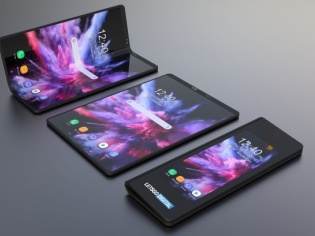-
Rahul Tulsiani
07:30 30th Dec, 2019
Vision 2020: What Will Give the Edge to Smartphones? | TechTree.com
Vision 2020: What Will Give the Edge to Smartphones?
The flashy screens, the extra-large displays and long hours of battery life may not cut it for users anymore. The key differentiators could well be the operating systems

For more than half-a-decade now, smartphones have been cocking-a-snook at users by adding features that they seldom use and making us pay a premium at that. The story has been one of incrementalization whereby every feature has improved marginally year-on-year without actually pushing the envelope through a high risk shift in functionality as was the case with wireless ear pods.
There were instances of new features such as the miniature radar sensors on the Pixel series, the 120 Hz refresh rate display, the 108 MP Penta camera setup and the 65W charging that arrived over the past twelve months and hardly made heads turn. The smartphones arrived, the reviewers raved for a while and then the next one came along. There was nothing memorable, at least not on the good side.
So what does the future look for smartphones? Would the incrementalization continue resulting in higher costs with little cost-to-benefit? Or would it be another procession of gadgets that arrive and depart without raising the bar in any way? Let’s take a look at how the market will shape up and what could prove to be the defining factors for success in 2020:
The Mid-range Story
There would be no dearth of buyers for top-end smartphones with the likes of Apple, Pixel and Samsung’s foldables continuing to attract users of the kind who show-off what they own. However, when it comes to the actual sales, the mid-range phones are likely to nail it. The Realme and Xiaomi brands from China have copied every feature from the bigger brands. The Xiaomi 108 MO Penta is priced at 30K and gives picture quality comparable to the iPhone 11 Pro while the Realme X2 Pro at under 30K compares well with the Samsung Galaxy S10 priced above 45K.
Of course, both these have different target groups, given that there is a specific community out there that buys Chinese smartphones while the others are used by a segment completely different. The former is found with college students and early stage professionals while the latter makes no bones about the fact that they only target mid-level and senior level executives though the rich do use these toys to indulge their children in schools and colleges.
The Futureless Features
There have been several instances of smartphones launching features with a lot of publicity and the users dissing them almost immediately upon launch. Google’s Pixel 4 series came out with the radar sensors which didn’t exactly excite users with the ability of unlocking the phone using the radar sensor, which arguably resulted in a faster unlocking of the smartphone.
Of course, once again the differentiation in the target audience meant that those that really cared about sensor-based unlocking of phones were the ones who found some use for it, such as those who want to unlock their phones while driving and didn’t really care for typing in a code or using their fingerprints, if a mere look could unlock their device.
Going forward, the radar sensor may not really prove to be the differentiator for smartphones for the college student or the young professional who would be loath to spend anything more than 15K – 20K for a device. Unless a Chinese brand offers such sensors at this price point, there is no way it is going to fetch a premium in the mass market segment.
The Magic Prescription
So, what would be that one or two elements governing the future of smartphones over the next twelve months? We believe customers are a tired lot, having witnessed incremental feature enhancements on successive smartphones which tend to stay in business for twelve months before the next in line reaches the assembly line with a slew of questionable feature additions.
Cameras, sensors, battery lives and such other aspects that has been making news over the past few years should indeed become history now. And Qualcomm appears to have figured it out as their latest chipsets (855+ and the new 865 are snapping at the heels of Apple hardware, which has more or less retained its position over the past decade due to its processing power and software synergies.
The battle between the iOS and Android too is getting closer as smartphones are using their own unique versions of Google’s phone operating system, a trend that the company itself kickstarted with the Pixel series some years ago. The OxygenOS of One Plus and the MIUI of Xiaomi are examples of what the future portends on the software side of things.
And while on software, the one important development that 2020 may bring in its wake would be tighter security around the smartphone so that they stop leaking data, though ideally they should also stop stealing it. But, that’s possibly a far-fetched dream, given that the Internet continues to make money only through data, leading to the data is oil cliché getting louder. Maybe, this is where the world’s first blockchain powered smartphone could set a trend!
In Conclusion:
While reviewers would continue to go gaga over incremental feature additions and companies would shout about these successes from every available rooftop, the fact remains that the consumer needs a smartphone to watch some videos, possibly an odd live television show, check emails, spend time on social chatter and answer a few phone calls in-between. Everything else just makes the smartphone user appear not so smart.
TAGS: Smartphone, Features, Pixel, Samsung, Xiaomi, One Plus
- DRIFE Begins Operations in Namma Bengaluru
- Sevenaire launches ‘NEPTUNE’ – 24W Portable Speaker with RGB LED Lights
- Inbase launches ‘Urban Q1 Pro’ TWS Earbuds with Smart Touch control in India
- Airtel announces Rs 6000 cashback on purchase of smartphones from leading brands
- 78% of Indians are saving to spend during the festive season and 72% will splurge on gadgets & electronics
- 5 Tips For Buying A TV This Festive Season
- Facebook launches its largest creator education program in India
- 5 educational tech toys for young and aspiring engineers
- Mid-range smartphones emerge as customer favourites this festive season, reveals Amazon survey
- COLORFUL Launches Onebot M24A1 AIO PC for Professionals







TECHTREE